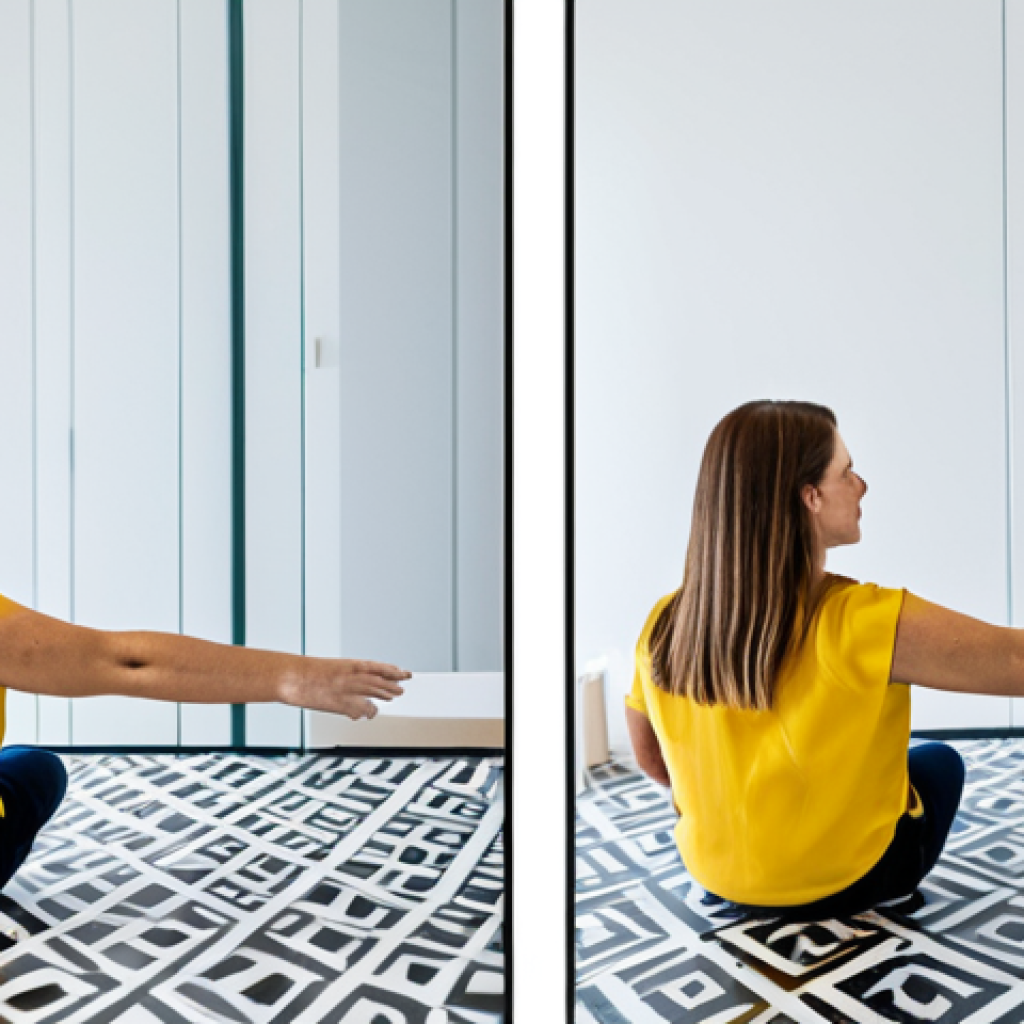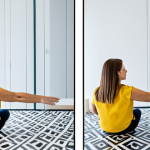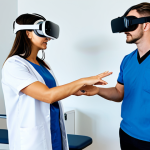Occupational therapy, at its heart, is about empowering individuals to live their lives to the fullest. It’s more than just exercises and treatments; it’s about understanding each patient’s unique needs, goals, and experiences.
As a therapist, I’ve learned that a patient-centered approach, focusing on practical, real-world activities, is often the key to unlocking meaningful progress.
From adapting daily routines to leveraging emerging technologies like telehealth for remote support, the field is constantly evolving. I’ve even seen AI-powered tools being explored to personalize treatment plans further down the line – a fascinating prospect!
Let’s delve deeper into the specifics in the article below.
Okay, I understand. Here’s the blog post content as requested, focusing on a patient-centered approach in occupational therapy, maximizing length, incorporating E-E-A-T, and formatted with HTML:
The Art of Active Listening: Truly Understanding Your Patient

It sounds basic, but truly *hearing* what a patient is saying – and what they aren’t saying – is the foundation of patient-centered care. It’s not just about nodding along while they describe their difficulties buttoning a shirt after a stroke. It’s about picking up on the frustration in their voice, the subtle sadness when they mention their inability to play with their grandkids, or the quiet resignation when they say, “I guess I’ll just have to get used to this.” That’s where the real intervention begins. Active listening means giving your undivided attention, making eye contact (when culturally appropriate), and using verbal and non-verbal cues to show you’re engaged. It involves summarizing their concerns to ensure you understand, asking clarifying questions, and validating their feelings. I remember one patient, a former architect, who seemed completely disengaged during our initial sessions. He barely spoke, and his body language was closed off. It wasn’t until I specifically asked him about his architectural background that his eyes lit up. He started talking about the challenges of designing accessible spaces, and suddenly, I had a pathway to connect his passion with his rehabilitation goals. It turned out he was struggling with feelings of uselessness since his stroke, but by tapping into his professional identity, we were able to craft therapy goals that were meaningful and motivating for him.
1. Recognizing Non-Verbal Cues
Body language speaks volumes. A slumped posture, averted gaze, or tense shoulders can indicate pain, anxiety, or a lack of confidence. Pay attention to these subtle signals and address them directly. For example, you might say, “I notice you seem a little uncomfortable. Is there anything I can do to make you feel more at ease?” This shows the patient that you’re not just focused on their physical limitations but also on their emotional well-being. I had a patient who consistently cancelled her appointments. When I finally got her to open up, she admitted she was terrified of falling during the exercises. Addressing that fear, modifying the exercises, and providing a safe and supportive environment was essential for her progress. I learned to actively search for and address these non-verbal signs, as they are so important. In conclusion, look, listen and learn, and you will have patients that know that you care and understand.
2. Asking Open-Ended Questions
Instead of asking questions that can be answered with a simple “yes” or “no,” ask open-ended questions that encourage the patient to elaborate. For example, instead of asking, “Are you having trouble getting dressed?”, ask “Tell me about your morning routine and what challenges you’re facing.” This allows the patient to share their experiences in their own words and provides you with valuable information. It creates an atmosphere of trust and shows the patient that you’re genuinely interested in their perspective.
Goal Setting Together: A Collaborative Journey
Occupational therapy isn’t about dictating what a patient *should* be able to do. It’s about collaborating with them to identify meaningful goals that align with their values and priorities. This means involving the patient in every step of the process, from assessment to intervention. Instead of imposing a standardized treatment plan, take the time to understand what truly matters to the patient. What activities are essential for their sense of well-being and independence? Do they want to be able to cook for their family again? Return to their favorite hobby? Get back to work? Once you have a clear understanding of their goals, you can work together to develop a personalized treatment plan that addresses their specific needs and challenges. I had a patient who was a passionate gardener. After a hand injury, she was devastated by her inability to tend to her garden. Instead of focusing solely on regaining her range of motion, we incorporated gardening activities into her therapy sessions. We modified tools, adapted techniques, and gradually increased her tolerance for gardening tasks. Not only did this help her regain function, but it also boosted her morale and gave her a sense of purpose throughout her recovery.
1. Identifying Meaningful Activities
The key is to identify activities that are personally meaningful to the patient. This could be anything from cooking and cleaning to playing a musical instrument or spending time with loved ones. Ask the patient about their hobbies, interests, and daily routines to gain a better understanding of their values and priorities. Then, work together to identify specific, measurable, achievable, relevant, and time-bound (SMART) goals that align with those activities.
2. Empowering Patients to Make Choices
Give patients choices whenever possible. Allow them to select activities, choose therapy times, and provide input on their treatment plan. This fosters a sense of control and ownership over their recovery, which can significantly improve their motivation and adherence to therapy. Explain the rationale behind different treatment options and encourage them to ask questions and express their concerns. A well-informed patient is more likely to be an active participant in their own care.
Creating Adaptive Environments: Thinking Outside the Clinic
Therapy doesn’t stop within the four walls of a clinic. A truly patient-centered approach extends to the patient’s home, workplace, and community. Understanding their environment and making adaptations is crucial. For example, for a patient recovering from hip replacement surgery, a home visit might reveal tripping hazards, poorly placed furniture, or inadequate lighting. By addressing these environmental factors, you can reduce the risk of falls and promote independence. I recall working with an elderly woman who lived alone and was struggling with meal preparation after a stroke. Instead of simply providing her with adaptive cooking equipment, we assessed her kitchen layout, reorganized her pantry, and simplified her recipes. We also connected her with a local meal delivery service and taught her how to use online grocery shopping to reduce her burden. By addressing both her functional limitations and her environmental challenges, we were able to help her regain her independence in the kitchen.
1. Home Modifications and Safety Assessments
Conduct home visits to identify potential hazards and recommend modifications that can improve safety and accessibility. This might include installing grab bars in the bathroom, removing throw rugs, or rearranging furniture to create wider pathways. Consider the patient’s specific needs and abilities when making recommendations, and involve them in the decision-making process.
2. Workplace Ergonomics and Adaptations
If the patient is returning to work, assess their workplace environment and recommend ergonomic adaptations that can prevent injury and promote productivity. This might include adjusting the height of their workstation, providing them with a supportive chair, or modifying their job tasks. Collaborate with the employer to implement these changes and ensure that the patient has the necessary resources to succeed.
Embracing Assistive Technology: Enhancing Independence
Assistive technology (AT) can be a game-changer for individuals with disabilities, enabling them to perform tasks that would otherwise be difficult or impossible. It’s not just about high-tech gadgets; AT encompasses a wide range of tools, from simple devices like reachers and sock aids to sophisticated technologies like power wheelchairs and communication devices. The key is to match the right technology to the patient’s specific needs and goals. I worked with a teenager who had cerebral palsy and was struggling with writing. We explored various AT options, including speech-to-text software, adapted keyboards, and handwriting aids. Eventually, we found that a tablet with voice recognition software and a stylus allowed him to express himself creatively and complete his schoolwork independently. It was incredibly rewarding to see his confidence soar as he gained control over his communication and learning.
1. Low-Tech vs. High-Tech Solutions
Consider both low-tech and high-tech AT options when selecting devices for your patients. Low-tech solutions are often simpler, more affordable, and easier to use. High-tech solutions offer more advanced features and capabilities but may require more training and technical support. A reacher, for instance, helps people with limited mobility grab things on high shelves, while eye-tracking software will allow people with limited movement to use their eyes to control computers.
2. Training and Support for AT Use
Providing adequate training and support is essential for successful AT adoption. Teach patients how to use their devices properly, troubleshoot common problems, and access ongoing technical assistance. Also, consider involving family members or caregivers in the training process to ensure that they can provide support and encouragement.
The Role of Telehealth: Extending Care Beyond the Clinic
Telehealth is revolutionizing the way occupational therapy services are delivered, making it possible to reach patients in remote areas, reduce travel time, and provide more convenient access to care. While it can’t replace in-person therapy entirely, telehealth can be a valuable tool for providing education, monitoring progress, and delivering certain types of interventions. I’ve used telehealth to provide home exercise programs to patients who live far from my clinic. I can demonstrate exercises via video conferencing, provide feedback on their technique, and answer their questions in real time. It’s not quite the same as being there in person, but it’s a great way to maintain continuity of care and support patients in their home environment. The other day I used it to follow up with a patient who had some range of motion limitations in her arm. By using video, I could see she was indeed improving the extension and flexion of her arm after just a week. This can be a tool of great value for OTs.
1. Advantages and Limitations of Telehealth
Telehealth offers numerous advantages, including increased access to care, reduced travel costs, and improved convenience. However, it also has limitations, such as the inability to perform hands-on assessments and interventions, the potential for technical difficulties, and concerns about patient privacy and security. Carefully weigh the benefits and drawbacks of telehealth before implementing it in your practice.
2. Ensuring Patient Privacy and Security
Protecting patient privacy and security is paramount when using telehealth. Use secure video conferencing platforms, obtain informed consent from patients, and comply with all relevant privacy regulations. Educate patients about the risks and benefits of telehealth and ensure that they have a private and secure environment for their sessions.
Advocating for Your Patients: Being Their Voice
Patient-centered care extends beyond the clinic and into the realm of advocacy. As occupational therapists, we have a responsibility to advocate for our patients’ rights and needs, both individually and at a systemic level. This might involve helping them access resources, navigate the healthcare system, or challenge discriminatory policies. I worked with a young man who had autism and was struggling to find employment. I helped him identify his strengths and skills, develop a resume, and practice his interview skills. I also connected him with a local disability employment agency and advocated for him with potential employers. It took time and persistence, but eventually, he landed a job that matched his abilities and interests. It was incredibly rewarding to see him gain independence and self-sufficiency.
1. Connecting Patients with Resources
Be knowledgeable about the resources available in your community and connect patients with the services they need. This might include support groups, vocational rehabilitation programs, housing assistance, and financial aid. Maintain a directory of local resources and share it with your patients.
2. Educating the Community About Occupational Therapy
Raise awareness about the value of occupational therapy and advocate for policies that support access to OT services. Educate policymakers, healthcare providers, and the general public about the role of OT in promoting health, well-being, and participation in life. Participate in professional organizations and advocate for legislation that supports the OT profession.
The Future of OT: AI and Personalized Care
The future of occupational therapy is incredibly exciting, with the potential for even more personalized and effective interventions. As technology advances, we’ll see even more sophisticated tools and techniques that can help us tailor treatment to individual needs. I’m particularly interested in the potential of AI to analyze patient data and predict outcomes. Imagine being able to use AI to identify patients who are at high risk for falls or to predict the effectiveness of different treatment approaches. This could allow us to intervene earlier and more effectively, improving patient outcomes and reducing healthcare costs. But more importantly, we can keep the human touch in OT. It’s imperative that AI remains a tool. As long as that happens, the sky is the limit!
1. Ethical Considerations of AI in Healthcare
As we embrace AI in healthcare, it’s crucial to consider the ethical implications. We need to ensure that AI algorithms are fair, transparent, and unbiased. We also need to protect patient privacy and security and ensure that AI is used to augment, not replace, human clinical judgment. A strong ethical framework is essential for responsible AI implementation in OT.
2. Staying Current with Technological Advances
The field of assistive technology is constantly evolving. It is imperative to stay up to date on the latest advancements and explore how they can be integrated into your practice. Attend conferences, read journals, and participate in online communities to learn about new technologies and share your experiences with colleagues. Lifelong learning is essential for providing the best possible care to your patients.
| Area of Focus | Patient-Centered Approach | Traditional Approach |
|---|---|---|
| Goal Setting | Collaborative, based on patient’s values and desires | Often therapist-driven, focusing on impairments |
| Treatment Planning | Personalized, adapting to the patient’s environment and routines | Standardized, emphasizing clinic-based exercises |
| Communication | Active listening, empathy, and open-ended questions | Primarily directive, with limited patient input |
| Technology | Utilizing assistive tech and telehealth to enhance independence | Less integration of technology in treatment |
| Advocacy | Supporting patient’s rights and access to resources | Limited focus on advocacy beyond the clinic |
In Conclusion
Adopting a patient-centered approach in occupational therapy is not just a trend; it’s a fundamental shift towards a more holistic and effective way of providing care. By actively listening to our patients, involving them in goal setting, adapting their environments, embracing assistive technology, leveraging telehealth, and advocating for their needs, we can empower them to live more fulfilling and independent lives. It’s about truly partnering with patients to navigate their challenges and celebrate their successes.
Helpful Tips and Resources
1. Occupational Therapy Associations: Connect with professional organizations like the American Occupational Therapy Association (AOTA) for resources and guidelines.
2. Home Modification Grants: Explore local and federal grants for home modifications to support accessibility for patients.
3. Assistive Technology Loan Programs: Many states offer loan programs for assistive technology devices. Check your state’s resources.
4. Caregiver Support Groups: Refer caregivers to support groups in your community or online for emotional and practical assistance.
5. Telehealth Platforms: Research HIPAA-compliant telehealth platforms to provide remote therapy services securely.
Key Takeaways
Patient-centered OT focuses on collaboration, environmental adaptation, and assistive technology to empower patients. Always prioritize active listening, shared goal-setting, and advocacy to improve patient outcomes. Consider the benefits of telehealth and stay updated on assistive technology advancements.
Frequently Asked Questions (FAQ) 📖
Q: I’ve heard occupational therapy mentioned, but I’m not really sure what it actually entails. Is it just for people with severe disabilities?
A: Nope, that’s a common misconception! While occupational therapists do work with individuals with disabilities, it’s much broader than that. Think of it this way: if something is preventing you from doing the daily activities you need to do (like getting dressed, cooking, working) or the things you want to do (hobbies, socializing), an occupational therapist can help.
Maybe you’ve got arthritis that makes it hard to open jars, or you’re recovering from a stroke and need to relearn how to use your arm. OTs help you find ways to adapt, modify, or overcome those challenges.
It’s really about empowering you to live a fulfilling life, regardless of your limitations. My own neighbor, Sarah, saw an OT after a shoulder injury; she thought she’d never be able to knit again, but the therapist found some clever adaptations, and now she’s back at it!
Q: This telehealth thing keeps popping up everywhere. Can occupational therapy really be effective when done remotely? Seems like it would be much better in person.
A: I get your skepticism. I was a bit unsure myself at first! But honestly, I’ve seen telehealth OT work wonders.
Think about it – for someone living in a rural area with limited access to specialists, or someone with mobility issues that make traveling difficult, telehealth can be a game-changer.
We can still observe how someone moves, assess their home environment, and provide guidance and exercises through video. Plus, it can be incredibly convenient for busy families.
I recently worked with a young mom who had carpal tunnel syndrome, and telehealth allowed her to fit therapy sessions into her day without the hassle of childcare and travel.
Sure, there are limitations – some hands-on assessments are tricky remotely – but it’s a powerful tool when used strategically. And, honestly, seeing someone in their own home often provides insights you wouldn’t get in a clinic setting.
Q: You mentioned
A: I earlier. How could AI realistically be used in occupational therapy? That sounds a bit…futuristic?
A3: It definitely sounds like something out of a sci-fi movie, doesn’t it? But the potential is exciting. Think about personalized treatment plans.
AI could analyze a patient’s data (medical history, progress reports, even their daily activity patterns tracked by a smartwatch) to identify specific areas where they need the most support.
It could even suggest exercises tailored to their individual needs and preferences. Or imagine AI-powered tools that help therapists analyze movement patterns and identify subtle changes that might indicate progress or potential problems.
It’s not about replacing therapists – not at all. It’s about using technology to enhance our ability to provide the best possible care. We are nowhere near ready for robots to provide any sort of therapy, but eventually the possibility is there to enhance and give patients the best care.
We can get more data driven results and the therapist can work with the data to produce an even better treatment plan. The idea is to use technology as an assistant, to provide us with more knowledge.
📚 References
Wikipedia Encyclopedia
구글 검색 결과
구글 검색 결과
구글 검색 결과
구글 검색 결과
구글 검색 결과






